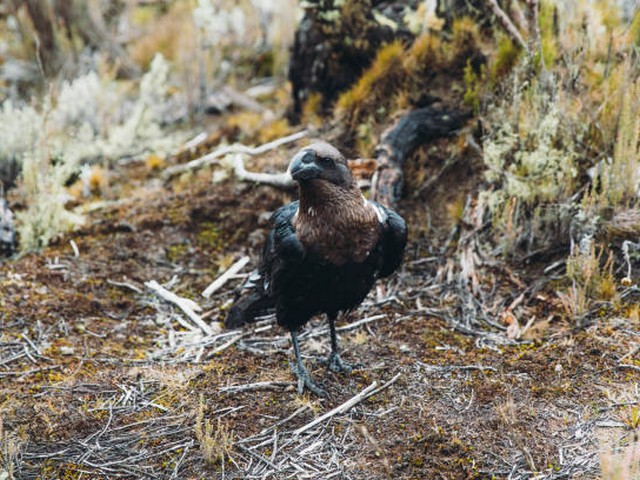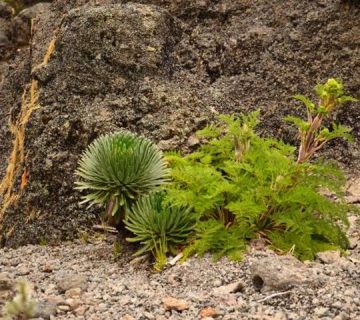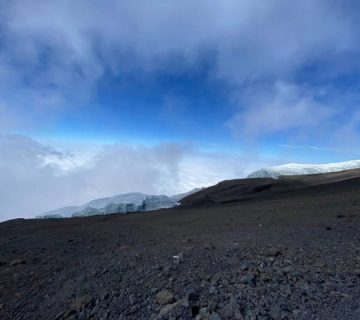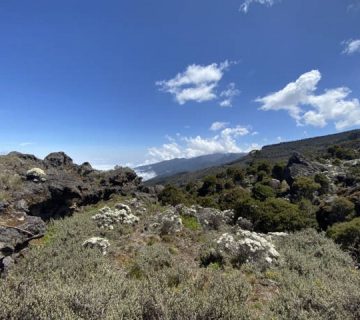Best Trekking Gear for Kilimanjaro Climb: Your Ultimate Guide
Welcome to the grand adventure of a lifetime! Climbing Mount Kilimanjaro is not just an ascent towards the towering summit of Africa’s highest peak; it’s also a journey into your own inner strength and endurance. It’s where you challenge your limits and embrace the pristine beauty of nature. But every seasoned trekker knows that to enjoy the journey and conquer the summit, you need the right tools and gear. That’s where we, at Kilimanjaro Centre for Trekking and Ecotourism (KCTE), step in to guide you through preparing for your Kilimanjaro adventure.
In this comprehensive guide, we’ll walk you through the essential trekking gear for Kilimanjaro that you’ll need to make your climb successful and memorable. So, lace up your boots, and let’s start preparing for the climb of a lifetime!
Understanding the Climate and Terrain of Kilimanjaro
Before diving into the gear specifics, it’s crucial to grasp the unique climate and terrain conditions of Kilimanjaro. Known as a mountain of extremes, Kilimanjaro can sweep you through four climatic zones—from tropical rainforest to arctic conditions—at nearly 19,341 feet above sea level. Each zone challenges you with different weather conditions, temperatures, and terrains, making the right gear indispensable for your trek.
Essential Trekking Gear: What to Pack?
H2: Clothing: Layering Up for the Climb
Base Layers:
Start with moisture-wicking base layers that keep you dry and comfortable. As you ascend, temperatures can fluctuate, making sweat management crucial.
Insulation Layers:
Your middle layer should insulate you from the cold. Fleece jackets or down vests are perfect as they are light but warm.
Outer Layers:
A high-quality, waterproof, and breathable shell jacket and pants are vital as you approach the summit. The weather can be highly unpredictable, so being prepared is key.
H2: Footwear: Foundation of Your Trekking Success
Hiking Boots:
Invest in durable, waterproof, and comfortable hiking boots. Break them in well before the climb to avoid blisters.
Thermal Socks and Gaiters:
Warm socks are essential for comfort and preventing frostbite in colder zones. Gaiters help keep moisture and debris out of your boots.
H2: Headgear and Handwear: Protecting the Extremities
Hat and Beanie:
Pack a brimmed hat for sun protection and a warm beanie for the cold.
Gloves:
Insulated gloves are necessary to combat frostbite as you near the summit where temperatures can drop below freezing.
H2: Packs and Poles: Essential Aids for the Trek
Backpack:
A sturdy, comfortable backpack with a capacity of 35-40 liters is ideal for your Kilimanjaro climb. Ensure it has sufficient compartments and a rain cover.
Trekking Poles:
Trekking poles reduce the impact on your knees and help maintain balance on rugged terrains.
H2: Tech and Accessories: Enhancing Your Climbing Experience
Headlamp:
A reliable headlamp and extra batteries are crucial, especially during the summit night.
Sun Protection:
Never underestimate the mountain sun. Sunglasses, sunscreen, and lip balm with high SPF are must-haves.
H2: Hydration and Nutrition: Fueling Your Ascent
Water Bottles or Hydration Bladder:
Staying hydrated is key. Insulated water containers are recommended to prevent freezing at higher altitudes.
Snacks:
High-energy snacks like nuts, dried fruits, and energy bars will keep your energy levels up throughout the climb.
Customizing Your Gear List According to the Route and Season
Different routes and seasons on Kilimanjaro might necessitate variations in your gear list. Consulting with experts at KCTE can help tailor your gear to the specific conditions expected during your climb.
Why Choose Kilimanjaro Centre For Trekking and Ecotourism (KCTE)?
Embarking on a trek with us not only ensures that you have seasoned guides who know Kilimanjaro inside out but also guarantees that you are equipped with the right knowledge and gear. At KCTE, we prioritize your safety, comfort, and the overall experience of your Kilimanjaro adventure.
Frequently Asked Questions (FAQ)
What is the best time of year to climb Kilimanjaro?
The best times to climb Kilimanjaro are during the dry seasons, typically from late June to October and from late December to mid-March.
How important is it to have trekking poles for the climb?
Very! Trekking poles will reduce the strain on your legs and provide stability during your ascent and descent.
Can I rent some of my trekking gear in Tanzania?
Yes, KCTE offers rental options for high-quality trekking gear. However, personal items like boots and base layers should be fitted and broken in prior to your climb.
How do I ensure my gear is suitable for Kilimanjaro’s varying climates?
Layering is key. Ensure that your gear covers you for a range of temperatures and weather conditions. Consulting with KCTE experts when planning and packing can provide additional tailored advice.
Ready to Conquer Kilimanjaro?
As you can see, preparing the right gear for your Kilimanjaro climb is essential. It’s not just about comfort and convenience; it’s about safety, endurance, and enjoying the journey to its fullest. At Kilimanjaro Centre for Trekking and Ecotourism, we are dedicated to making your climb successful. Browse our website or contact us directly to book your adventure and consult further on gearing up correctly for your Kilimanjaro trek. The roof of Africa awaits, and so does the journey of a lifetime!




